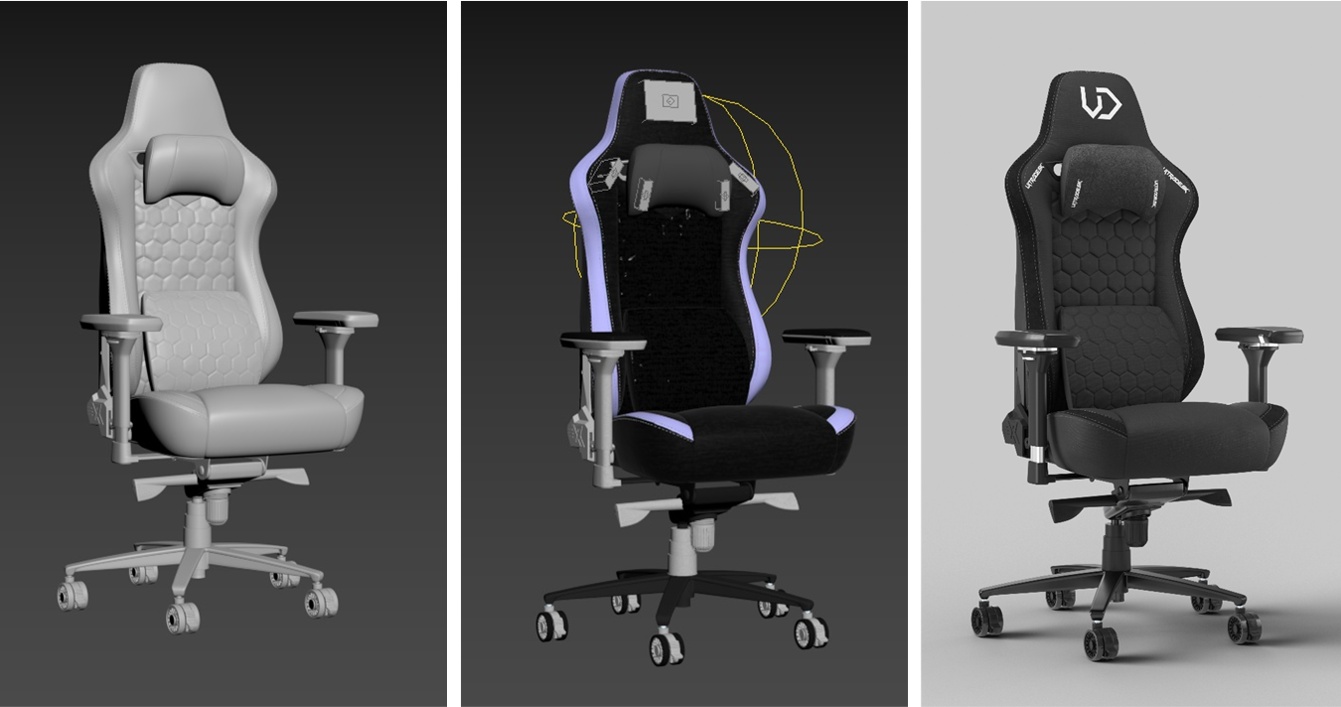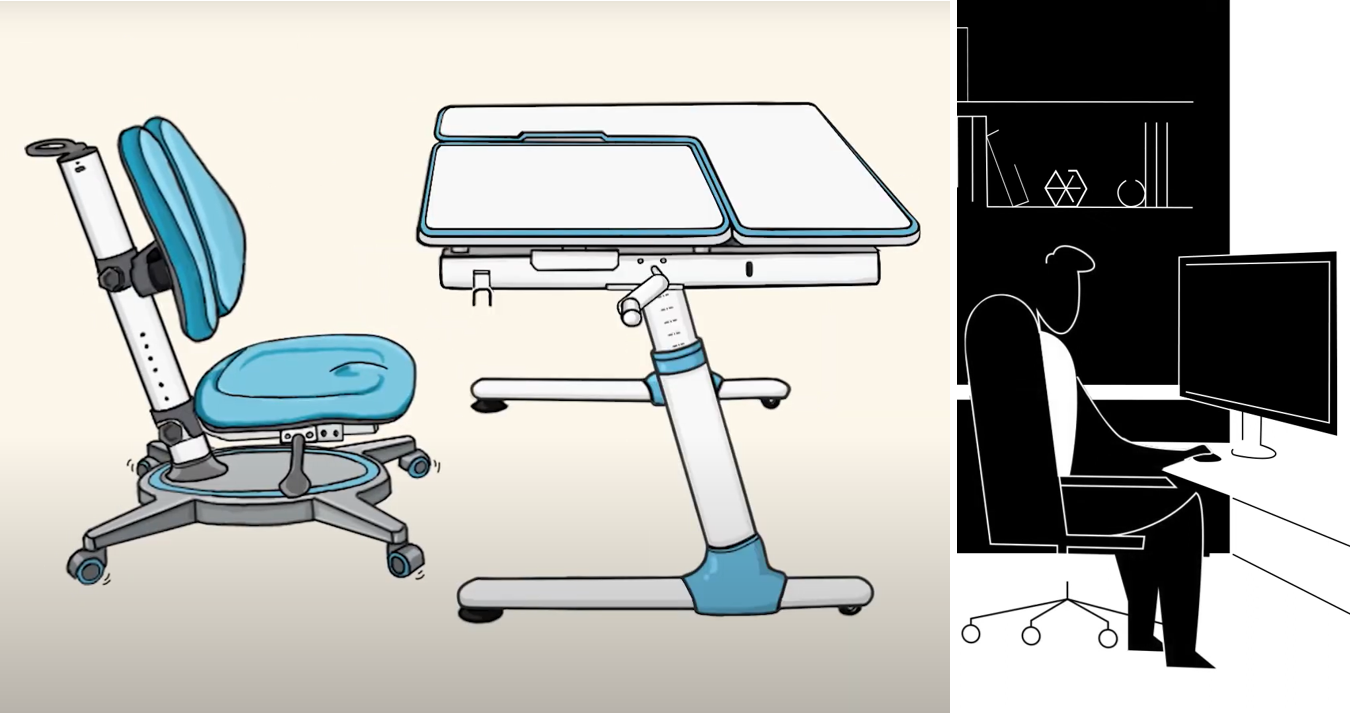2D VS 3D Animation:
Unveiling the World of Animation Production
May 26, 2023
The power of video as a marketing tool has been proved in many studies. As the statistic shows, 88% of people have been convinced to purchase a product or service simply by watching a brand’s explainer video. There are different kinds of videos that can be used to showcase the product or service, such as animation and live-action videos. Compared to shooting a live-action video using the actual environments and products, animation videos are free to create all kinds of ideas, with no restrictions on the place of production and less people engaged.
In this blog post, we will introduce both 2D and 3D animation videos and uncover the main differences between them. Additionally, we will also explore the benefits of presenting 3D product overview videos to customers as a way to build sales.

Created by treefruit. Do not use without permission
How to make a 3D animation
In 3D animation videos, objects can be moved and rotated following the same principles as in real life. To achieve this goal, the production is more relying on digital tools and specialized software.
Step 1: Storyboarding and ScriptThe initial stage in the 3D production process involves conceptualizing ideas and creating storyboards to visually represent these ideas. The visualization of ideas is presented in the form of a storyboard, which is a series of illustrations that depict the story based on the timeline.
Step 2: ModellingOnce the storyboard is approved, it is time to start the actual work. 3D designers will create digital objects together with characters, props, and environments. In some cases, artists can directly use CAD files provided by the client, while in other cases, they need to create models by their own according to product samples or pictures.

Created by treefruit. Do not use without permission
Step 3: Texturing and LightingAfter the models are created and put in place, designers will apply textures and materials to the models, simulating surfaces and adding visual richness. To make the set even more realistic, a combination of lighting techniques will be used to depict the time of the day or the mood of the shot.
Step 4: AnimationThe animation stage involves creating the key poses, movements, and performances for the characters and objects. Animators use techniques such as keyframe animation or motion capture to bring the characters to life. They manipulate the virtual skeletons, controlling joint movements and expressions to create believable and dynamic performances.
Step 5: RenderingRendering is the process of transforming the 3D scene into a final image or sequence of images. It involves the computation of lighting, textures, shadows, and other visual effects to generate the realistic or stylized visuals that make up the animation. Rendering can be a time-intensive process, especially for complex scenes with high levels of detail.
Step 6:Post-ProductionAfter rendering, the 3D video may undergo post-production enhancements. This stage involves compositing, which involves combining multiple layers or elements of the animation, adding visual effects, color grading, and editing. Sound design is also integrated at this stage, including adding voice-overs, music, and sound effects to enhance the overall audio-visual experience.

How to make a 2D animation
As traditional animation, two-dimensional animation is one of the major types of animation. It’s widely used for creating animated cartoons, marketing videos, corporate presentations, educational materials, and so much more. The process of crafting a 2D animation typically involves the following steps:
Step 1: Storyboarding and ScriptJust like in the production of 3D animation, the first step in creating a 2D animation is also storyboarding. Artists sketch or digitally illustrate a sequence of images that represent key scenes and actions in the animation. Storyboards serve as a visual blueprint, helping to plan the narrative flow and timing of the animation.
Step 2: AnimaticOnce the storyboards are complete, they are compiled into an animatic. This is a rough version of the animation, where the storyboard images are arranged in sequence and accompanied by temporary audio, including dialogue, sound effects, and music. The animatic helps establish the timing and pacing of the animation.
Step 3: Character and Background DesignIn this stage, artists create and refine the appearance of characters and background. Artists consider the mood, atmosphere, and visual aesthetics of the animation to develop detailed and captivating settings that complement the story.
Step 4: Keyframing and InbetweeningKeyframing is the process of sketching the essential poses and movements in each scene of the animation. After keyframing, inbetweening is carried out to fill in the frames between the key poses to achieve seamless transitions and lifelike movements in the animation.
Step 5: Coloring and TexturingOnce all frames are complete, the next step is to add colors, shading, and textures to the characters and backgrounds. Artists use various techniques such as digital coloring, cell shading, or traditional painting to enhance the visual appeal and depth of the animation.
Step 6:Post-ProductionSimilar to 3D animation, 2D animation also needs post-poduction for editing, sound effects, and visual effects.
Differences Between 2D and 3D Animation
As we’ve discussed above, the production process of 2D and 3D animation videos can differ significantly. Therefore, the visual style are presented in two different ways, with 2D animation embracing traditional hand-drawn artistry and 3D animation allowing more depth, realism, and detailed rendering. Due to their realistic and immersive nature, 3D explainer videos often have a higher visual impact, making it a perfect choice for showcasing the texture and function of a product. On the other hand, 2D explainer videos, although simpler in style, can still be effective in conveying messages and storytelling through the creative use of colors, shapes, and motion. So, it is more suitable for service introduction and installation guide.
How 3D Product Videos Benefit Sellers
In the modern marketplace, 3D product overview videos have become an invaluable tool for sellers because they can attract more attention than traditional marketing methods.
-
Enhanced Visualization:
3D product videos allow potential customers to view products from different angles, zoom in on details, and experience them virtually, providing a more immersive and accurate representation than traditional 2D images. And this interactive and immersive nature of 3D animations helps customers make more informed purchasing decisions, resulting in a higher likelihood of completing a sale.
-
Increased Engagement:
Engaging visuals and dynamic animations capture viewers' attention, making them more likely to stay engaged with the product presentation and retain information about its features and benefits. In a survey conducted by Forbes, it was found that 59% of senior executives prefer to watch video content rather than reading text. By leveraging 3D product overview videos, sellers can effectively capture and retain the attention of their target audience, leading to higher engagement levels and increased brand recall.
-
Improved Understanding:
3D product overview videos allow sellers to showcase their products from various angles, highlight features, demonstrate complex mechanisms, and address potential customer questions, resulting in a better understanding of the product's value proposition.
-
Brand Differentiation:
Utilizing 3D animations sets sellers apart from competitors, showcasing a commitment to innovation, cutting-edge technology, and a modern approach to marketing.
-
Social Media Engagement Boost:
On social media platforms, videos tend to garner higher engagement rates compared to static images or text-based posts. According to HubSpot, social media posts containing video content generate 48% more views and receive significantly more shares than non-video posts. By sharing captivating 3D product overview videos, sellers can tap into the viral potential of social media and expand their brand reach.
3D Animation Services
With an in-house 3D animation studio, we provide various types of animation productions for you to choose:
-
Product features overview
Explain the purpose of the product design and why people needs it - generating interest and adding a boost to your sales
-
Product installation video
Step-by-step directions on how to use or assemble a particular product.
-
360° product visualization
An easy and intuitive viewing experience for eCommerce and other applications.
-
Photorealistic images let you put your product in any scene or application.
-
3D models
Create a 3D model of the product based on the product sample or references.
-
Animated GIF
Show off details and motion that highlights a key function or feature of the product.
Click here and learn more about how we work with you and deliver high-quality visual products.

